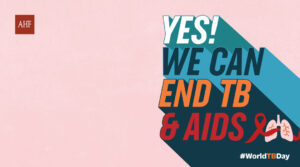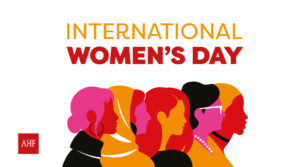The Joint United Nations Program on HIV/AIDS (UNAIDS) presented its most recent report on the situation of this pandemic, and warned that millions of lives are at risk because the response to HIV has been faltering in recent years. Two years, due to the health crisis unleashed by COVID-19.
This weakening of the response to HIV was reflected in the fact that, during the previous year, there were 1.5 million new infections, that is, 1 million more than those set as a global goal.
Through a press release, UNAIDS detailed that, although the global number of new infections decreased from 2020 to 2021, it only did so by 3.6%, the lowest figure recorded for a year since 2016.
Looking at some specific regions, it was observed that the regions of Latin America, Eastern Europe, Central Asia, the Middle East and North Africa have shown increases in the number of annual HIV infections, a trend that has been maintained for some time several years.
On the other hand, in the Asia and the Pacific region (where the largest population in the world is concentrated) it is observed that the number of infections has grown again, although it had already clearly decreased.
The shadow of receding
Every six months, UNAIDS presents a report on the state of the HIV pandemic in the world. The last one has been titled “In Danger”, that is, a phrase that leaves no room for doubt about the latent threat of a setback in progress against this global health problem, if the direction that efforts have taken is not corrected in recent months.
“Progress against the HIV pandemic has faltered, resources have been reduced and millions of lives are at risk as a result,” the international body said.
And while there is some good news, such as the decline in new cases in West and Central Africa and the Caribbean, even in these regions the response to HIV is threatened by a cut in resources.
At the presentation of the report, held during the International AIDS Conference, which is taking place in Vancouver, Canada, the executive director of UNAIDS, Winnie Byanyima, stated that “these data show that the response to AIDS is in serious danger”, and that if humanity is not making rapid progress against this pandemic, then it is losing ground, as infections surge amid the COVID-19 emergency, mass migration and other ongoing crises.
Vulnerability and the most affected groups
As highlighted in recent months, UNAIDS recalled that new infections are especially affecting young women and adolescent girls, with 1 infection every 2 minutes in this population during 2001.
This gender-differentiated impact is particularly noticeable in Africa, where an adolescent or young woman is three times more likely to acquire HIV than an adolescent or young man. This situation is also influenced by the interruption of school services due to the COVID-19 emergency, the increase in teenage pregnancies and gender-based violence that also worsened during the confinements.
Other key populations that have been particularly affected by the interruption of HIV health services in the last two years are, for example, gay men and other men who have sex with men (MSM), globally.
Already in 2021 it had been shown that MSM have a 28 times higher risk of acquiring HIV, compared to other men their age. In addition, injecting drug users are 35 times more at risk, commercial sex workers are at 30 times more risk, and transgender women are at 14 times more risk of acquiring the virus.
Racial inequities are also making a difference in the behavior of the HIV pandemic. In countries such as the United Kingdom and the United States, the white population has registered a decrease in new cases, unlike the population of African descent.
Limited resources
AIDS complications took a life every minute in 2021, accounting for 650 thousand deaths, despite the existence of effective antiretroviral treatments, as well as tools to prevent, detect and treat opportunistic infections.
The report also shows that efforts to ensure that all people with HIV have access to life-saving treatment are flagging. The number of people on antiretroviral treatment grew more slowly in 2021 than it had in the previous decade.
There are still 10 million people without access to HIV treatment, and only half (52%) of girls and boys living with HIV can access these therapies. This means that the gap in treatment coverage between minors and adults is widening, rather than narrowing.
In her speech, Winnie Byanyima underlined the importance of political will in turning the tide of the HIV epidemic. If the world cares about empowering girls, stopping AIDS deaths among children and saving lives instead of criminalizing them, then “the AIDS response must be put back on track”.
It is time, he added, to demonstrate international solidarity and for nations to fulfill their commitments. “It is possible to end AIDS by 2030, as the world has promised,” he said, “but it takes courage to do it.”
At AHF Latin America and the Caribbean we have a commitment to bring HIV/AIDS services to the populations that need it most. From our front, we call on the international community not to ignore this call to redirect efforts and prevent the loss of millions of lives due to AIDS.






